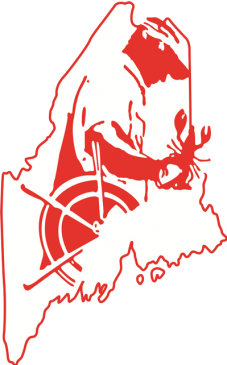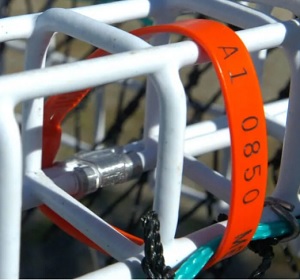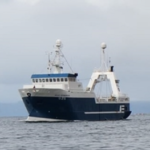Tag Archives: Patrick Keliher
State backs lobstermen in urging regulators to reevaluate changes to minimum size
 The rules, which are set to go into effect on Jan. 1, 2025, will increase the minimum size from 3 1/4 inches to 3 5/16 inches, on the gauges that lobstermen use to measure lobsters and determine whether they are allowed to harvest them. A second increase would take effect two years later, bringing the minimum to 3 3/8 inches. The rules also affect the vents in traps that allow undersized lobsters to escape. The Atlantic States Marine Fisheries Commission says it is making the changes to preserve the long-term future of the lobster population in the Gulf of Maine, which federal data show has sharply dropped. Lobstermen also question the accuracy of the federal data – saying that it was corrected over a small and abnormal time frame that doesn’t indicate the reality of population trends. more, >>CLICK TO READ<< 06:23
The rules, which are set to go into effect on Jan. 1, 2025, will increase the minimum size from 3 1/4 inches to 3 5/16 inches, on the gauges that lobstermen use to measure lobsters and determine whether they are allowed to harvest them. A second increase would take effect two years later, bringing the minimum to 3 3/8 inches. The rules also affect the vents in traps that allow undersized lobsters to escape. The Atlantic States Marine Fisheries Commission says it is making the changes to preserve the long-term future of the lobster population in the Gulf of Maine, which federal data show has sharply dropped. Lobstermen also question the accuracy of the federal data – saying that it was corrected over a small and abnormal time frame that doesn’t indicate the reality of population trends. more, >>CLICK TO READ<< 06:23
Maine lobstermen made more money in 2023 despite catching fewest lobster in 15 years
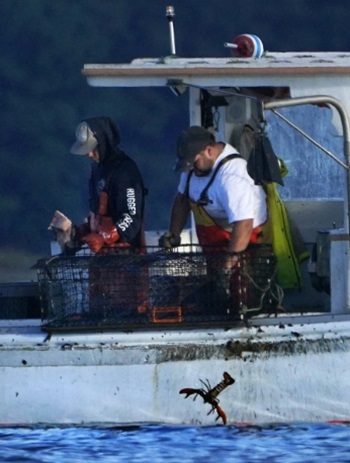 Maine lobstermen raked in $464.4 million at the docks last year, rebounding from the worst year the fishery had seen in a decade, according to an annual report from the Maine Department of Marine Resources released Friday. The dwindling number of landings isn’t necessarily a surprise, though. State officials and members of the lobstering community say the decrease reflects the impacts of high costs to operate the fishery last year. And the dip in poundage indicates how lobstermen navigated the challenging obstacles.“Fishermen are now very strategic about how they fish. Expenses are through the roof, so you can’t afford to be out if you’re not making money,” said Patrice McCarron, a lobsterman and policy director with the Maine Lobstermen’s Association. more, >>click to read<< 16:26
Maine lobstermen raked in $464.4 million at the docks last year, rebounding from the worst year the fishery had seen in a decade, according to an annual report from the Maine Department of Marine Resources released Friday. The dwindling number of landings isn’t necessarily a surprise, though. State officials and members of the lobstering community say the decrease reflects the impacts of high costs to operate the fishery last year. And the dip in poundage indicates how lobstermen navigated the challenging obstacles.“Fishermen are now very strategic about how they fish. Expenses are through the roof, so you can’t afford to be out if you’re not making money,” said Patrice McCarron, a lobsterman and policy director with the Maine Lobstermen’s Association. more, >>click to read<< 16:26
Maine lobstermen say electronic trackers required by federal regulators violate privacy
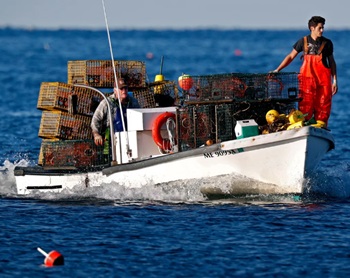 Some Maine lobstermen say that new electronic monitoring requirements are violating their constitutional right to privacy. As of Dec. 15, the Atlantic States Marine Fisheries Commission requires that lobstermen with federal permits install a monitor tracking their boat’s location each minute that it’s moving. But the Sustainable Maine Fishing Foundation — a nonprofit arm of the Maine Lobstering Union — is now asking the state to delay the requirements until the next fishing season. The foundation outlined its concerns in a letter sent to the Maine Department of Marine Resources earlier this month. more>>click to read<< 09:03
Some Maine lobstermen say that new electronic monitoring requirements are violating their constitutional right to privacy. As of Dec. 15, the Atlantic States Marine Fisheries Commission requires that lobstermen with federal permits install a monitor tracking their boat’s location each minute that it’s moving. But the Sustainable Maine Fishing Foundation — a nonprofit arm of the Maine Lobstering Union — is now asking the state to delay the requirements until the next fishing season. The foundation outlined its concerns in a letter sent to the Maine Department of Marine Resources earlier this month. more>>click to read<< 09:03
Fishing foundation pushes back against electronic tracking
 Three days before a federal electronic tracking requirement took effect for all lobster boats fishing in federal waters, the Sustainable Maine Fishing Foundation (SMFF), a nonprofit that shares headquarters on Bar Harbor Road with the Maine Lobstermen’s Union and Lobster 207, sent a letter through its attorneys to Patrick Keliher, commissioner of the Maine Department of Marine Resources. The Dec. 15 deadline to start using electronic “black box” tracking devices has come and gone, but the Foundation is busy raising funds for legal expenses, raising more than $46,000 in its first week toward a goal of $250,000. more, >>click to read<< 10:39
Three days before a federal electronic tracking requirement took effect for all lobster boats fishing in federal waters, the Sustainable Maine Fishing Foundation (SMFF), a nonprofit that shares headquarters on Bar Harbor Road with the Maine Lobstermen’s Union and Lobster 207, sent a letter through its attorneys to Patrick Keliher, commissioner of the Maine Department of Marine Resources. The Dec. 15 deadline to start using electronic “black box” tracking devices has come and gone, but the Foundation is busy raising funds for legal expenses, raising more than $46,000 in its first week toward a goal of $250,000. more, >>click to read<< 10:39

Seeking closure for lobsterman’s family: ‘No one wants a man lost at sea’
As Tylar Michaud headed home to Steuben from lobster fishing on Thursday, he told his father it had been a beautiful day on the water with no fog. They talked about finding time to finally get out on his boat together. “He was really proud of it and he wanted to get me out there to go fishing with him,” Ron Michaud said. Barely 24 hours later, Tylar Michaud’s boat, Top Gun, was found with no one aboard, setting off an intense search for the 18-year-old commercial fisherman. After an unsuccessful weekend search that was at times hampered by thick fog, the Maine Marine Patrol continued searching for Michaud on Monday. >click to read< 07:52

Catch size a hot topic at Zone B meeting
A declining stock, looming federal rules to protect right whales and the court fights against them, how required gear and reporting changes will be paid for — Zone B lobstermen had a lot of industry news to talk about April 12 at Mount Desert Island High School. Discussion centered mainly on newly proposed minimum (and maximum) legal catch sizes to bolster the lobster stock. “I’ve heard at all council meetings, it’s not if you act, it’s when you act,” said Patrick Keliher, commissioner of the Maine Department of Marine Resources. “It’s almost like no one is taking into account what we’re seeing,” Zone B Council Vice Chairman James Hanscom said. “As an industry, we’re handling a lot of lobsters.” Several lobstermen and council members at the meeting had attended a March ASMFC meeting in Ellsworth and were familiar with proposed management measures that would increase the minimum legal size for landed lobster. >click to read< 16:20
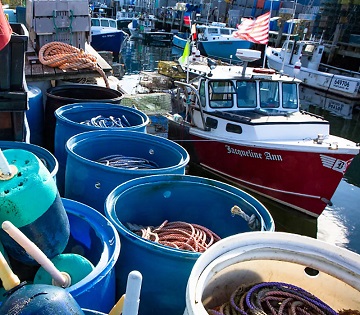
Maine’s seafood harvest has fallen 120M pounds since 2012
At 197 million pounds for all commercially harvested marine species, 2022 was the first time since 1975 that Maine’s reported annual seafood harvest has fallen short of 200 million pounds. In fact, the cumulative volume of Maine’s commercial fisheries dropped by more than 120 million pounds between 2012 and 2022, state data show. Patrick Keliher, head of the state’s Department of Marine Resources, said there are myriad reasons why fishery landings have declined — some regulatory, others environmental. Meanwhile, landings of lobster, which remains the state’s dominant fishery despite looming restrictions to better protect whales, have dipped in recent years but still are much higher than they were prior to the 1990s. >click to read< 09:12
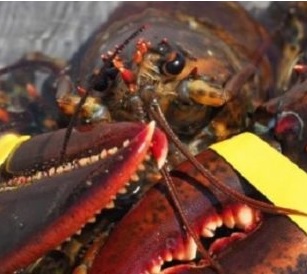
A year after record-breaking catch, value of Maine lobster landings are lowest in a decade
Maine lobstermen hauled in the least valuable lobster catch in a decade last year, when a decrease in price per pound and higher operational costs gave them less incentive to get out on the water. The $389 million haul, a 47% drop from 2021’s record-shattering catch,,, The size of the haul, 98 million pounds, was nearly identical to the 10-year low hit in 2020, when lobstermen also scaled back operations, then because of the closure of traditional markets as a result of the pandemic. Kristan Porter, a lobsterman from Cutler and president of the Maine Lobstermen’s Association, laid the blame for the drop in price per pound squarely on the economy. >click to read< 11:06

Maine lobstermen deal with another new rule, and it’s not about right whales
Until this year, only a fraction of Maine’s lobster fishers were required to report what they caught, including details on when, where and how many. The data went to the Atlantic States Marine Fisheries Commission, a coalition of 15 East Coast states that regulates fishing for more than two dozen species. But as Jan. 1, all Maine lobstermen now have to report data on their harvests to the state and to the commission. The fishermen, traditionally wary of new regulations on their industry, aren’t saying much. “All the paperwork is always a hassle, but we need to give up the data and hopefully it doesn’t get used against us,” said John Tripp, a lobsterman from Tenants Harbor. Several other members of the lobster industry declined a request for an interview about the mandate. >click to read< 09:15

2021: A Year of Historic Value for Maine Commercial Fishermen
On the strength of an historic year for lobster and a rebounding elver fishery, the value of Maine’s commercially harvested marine resources in 2021 reached an all time high at $890,668,873. According to recently released data from the Maine Department of Marine Resources, the overall value earned by harvesters in 2021 jumped by more than $365 million and exceeded the previous overall record of $733,691,455, set in 2016, by $150 million. >click to read< 09:30
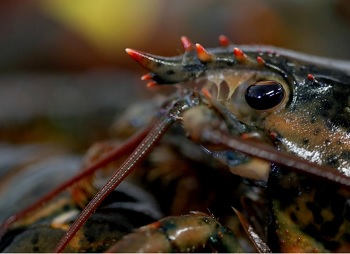
Federal windfall won’t put a stop to state lobster industry relief bills
Although Maine’s lobster industry is set to receive $17 million in federal funding as part of the 2022 omnibus spending package, it is unlikely to affect two bills going through the Legislature that seek more than $30 million in state funds for the industry. The spending bill will bring more than $200 million in funding for projects across the state. For the lobster industry, it includes $14 million to help lobstermen comply with new federal regulations intended to protect endangered North Atlantic right whales, set to take effect May 1, along with $760,000 for the Department of Marine Resources to conduct outreach and education among lobstermen, and $2.3 million for right whale research, monitoring and conservation. >click to read< 17:28
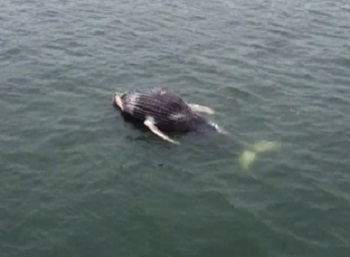
COVID-19 saves right whales by sinking cruise ships
Canada created the Shediac ship restricted zone in April 2020 just a couple weeks before Holland America’s Zaandam was scheduled to sail through that zone on a shipping lane used only seasonally by cruise ships as a shortcut to Quebec City. However, a COVID-19 no-sail order in March 2020 superseded that restriction. Consequently, there was not one Canadian ship right whale strike death in two years and only one Canadian crab entanglement death,,, Zero whales were killed by lobster gear. There has not been one death from lobster gear in the U.S. and only a couple in Canada in over 20 years but the Center for Biological Diversity, with no supporting data, claims the whales are going extinct based on lobster entanglements. >click to read< By Jim O’Connell 07:31
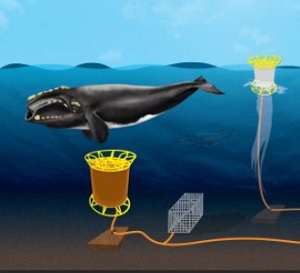
Fed Right whale plan could mean lobster industry changes – a reinvention of the fishery as we know it
Federal officials recently released plans,,, But it’s the risk reduction target, an aggressive 98 percent, that Maine Department of Marine Resources officials said means only one thing, “a complete reinvention of the fishery as we know it.” The conservation framework, an addition to the 582-page biological opinion, creates a four-phased approach to all but eliminate the death and serious injury of the whales in federally managed fishing grounds. The first phase calls for a 60 percent reduction in right whale deaths and serious injuries this year. Patrice McCarron, Maine Lobstermen’s Association, fears the industry can’t sustain that level of change. “If you look at the changes we’ve made over the last 25 years, there’s not a lot left to give,”, >click to read< 10:27

It’s time to open the economy back up! Maine Lobstermen Seek Ways To Prevent Financial Crash
Anti-glut tactics might include limiting days at sea, narrowing size limits or barring the catch of single-clawed lobsters to reduce the overall haul. In an online meeting Monday, Marine Resources Commissioner Patrick Keliher told Downeast lobstermen that he’s found no consensus on the best course of action. Lobsterman Jim Hanscom, of Bar Harbor, says he is wary of intervention by Gov. Janet Mills. “This governor scares me on a lot of levels, and the idea of her having the ability on shutting this fishery down or stopping dealers from buying, I think it’s just dangerous.” Keliher is scheduled to brief Mills on the issue Tuesday,,, >click to read< 10:40

Maine: Elver price plummets; lobster industry seeks help
Earning a living as a fisherman is tough in the best of times. Right now, times are bad and Maine fishermen have to hope they don’t get any worse.
Last year, according to the Department of Marine Resources, Maine harvesters landed 9,620 pounds of elvers, juvenile eels, and dealers paid $20,119,194 for the catch, an average price of $2,091 per pound for the fishermen. Things are markedly different in this year of the coronavirus pandemic.,, Like elver harvesters, members of Maine’s lobster industry have experienced an extraordinary disruption of their fishery. Most lobsters are consumed in restaurants or other commercial settings,,, >click to read< 16:30

CARES Act : Maine’s cut of $300 million in federal seafood industry funding is nation’s fifth-highest.
Maine is in line to get $20 million to help its battered seafood industry weather the COVID-19 storm. The award, announced Thursday by U.S. Sen. Susan Collins, R-Maine, comes out of the $300 million in federal funding included in the CARES Act to help the U.S. fishing industry survive the economic losses associated with the coronavirus pandemic. Maine’s award was the fifth-highest out of 31 states. Commissioner Patrick Keliher said Thursday that he was only just learning about the award and would not be making any comments about distribution plans, , or priorities, until he received specific guidance from the NOAA. >click to read< 13:44
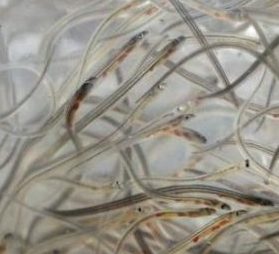
Coronavirus affecting Maine fisheries
As of early Wednesday morning, the Maine Center for Disease Control and Prevention had yet to report a single confirmed or presumed case of COVID-19, the respiratory infection caused by the coronavirus, in eastern Maine, but the lobster industry is already feeling the impacts of the global pandemic. “The market is really poor,” Stonington lobsterman Hilton Turner said Tuesday afternoon.,, The uncertainties arising from the coronavirus will likely affect other fisheries. The state’s elver fishing season opens on Sunday, and virtually the entire harvest is shipped to buyers in China. >click to read< 10:19

Maine Seeks to Aid Lobstermen as Federal Whale Protections Loom
On Friday, the state’s Department of Marine Resources released a plan it says protects the endangered whales and lobstermen, whom the feds say need to do more to prevent traps and lines from killing the whale. Maine’s suggestions include having lobstermen use ropes with weak points the whales could easily break and calls for a 25% reduction in the amount of vertical trap lines. >click to read< 08:29
Maine Plan Aims To Reduce Lobstering Impact On Right Whales – The Maine Department of Marine Resources tweaked its October proposal to balance the needs of lobstermen while protecting the whales,,, >click to read< 09:32

Lobstermen’s Association rejects DMR whale proposal
Efforts to find consensus over how to protect endangered North Atlantic right whales from entanglement in fishing gear without decimating the Maine lobster industry took a blow last week. The Maine Lobstermen’s Association (MLA) announced that it would not support a plan developed by the Department of Marine Resources “because it seeks reductions that exceed the documented risk posed by the Maine lobster fishery” and “creates unresolved safety and operational challenges for some sectors of the lobster industry,”,,, >click to read< 10:43

Lobstermen Question State Whale Plan at Waldoboro Meeting
Lobstermen expressed a mix of frustration and acceptance upon hearing the state’s new plan to protect North American right whales during a meeting in Waldoboro on Tuesday, Nov. 5. Maine Department of Marine Resources Commissioner Patrick Keliher presented the state’s proposed gear rules and fielded questions in the Medomak Middle School gymnasium. Photo’s >click to read< 09:55
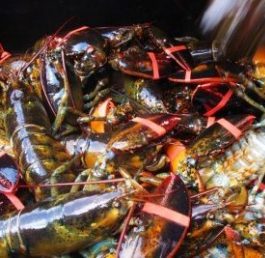
Lobster industry split over whale protection plan called Maine’s ‘line in the sand’
Some fishermen at the South Portland meeting cheered the plan. One gave Keliher a standing ovation, saying the new proposal was much better for the lobster fleet than the task force plan rolled out in August that called for 50 percent fewer buoy lines. But fishermen in Ellsworth and Waldoboro, the site of the first two meetings this week, urged Keliher to resist federal pressure to make concessions that would hurt lobster fishermen when they pose no real threat to the whale.,, “Grow a backbone,” one lobstermen told Keliher. “Don’t give them anything now.” >click to read< 07:47

Lobstermen hear proposed measures to mitigate danger to right whales
Patrick Keliher, the commissioner of the Maine Department of Marine Resources, explained the plan the DMR will submit to the federal government, hoping the proposal is strong enough to meet guidelines.,, Correction, George Michael Bernier, who fishes out of Gouldsboro, said the proposed changes — while more palatable than the previous plan — still increase the danger and the cost for fishermen. Bernier said plenty of fishermen have thought of selling out but said they are just in too deep. Many would face bankruptcy if they did so,,, Video, >click to read< 06:20
‘It Sucks … But I’m Going To Try It’ — Officials Present Proposed New Gear Rules To Maine Lobstermen – >click to read<
Maine proposes targeted exemptions to help lobster industry weather whale crisis – >click to read<
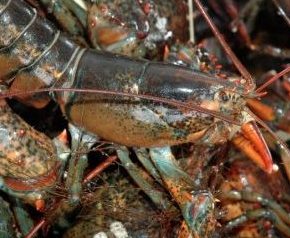
DMR’s answer to whale rules focus offshore
Last week, DMR Commissioner Patrick Keliher announced that after “rigorous scientific analysis,” the department had come up with a new draft plan to address “both the risk to right whales and concerns of fishermen” that is “in keeping with the real risk the Maine fishery presents.” Last March, the National Marine Fisheries Service announced that the risk of injuries to right whales in the Gulf of Maine had to be reduced by at least 60 percent. Last March, the National Marine Fisheries Service announced that the risk of injuries to right whales in the Gulf of Maine had to be reduced by at least 60 percent.,,, The rule also would extend electronic vessel monitoring now required on boats that hold permits to fish for species other than lobster in federal waters to all federally permitted lobster boats. >click to read< 11:27

Keliher gives fishermen homework on whale rules
“Feel free to yell at me,” Patrick Keliher, commissioner of the Maine Department of Marine Resources (DMR), told a packed gym at the Trenton Elementary School Tuesday. “But it’s the federal government that’s driving the bus here.” Keliher was in Trenton for the first in a series of meetings with lobstermen up and down the coast to discuss specific ways for the lobster fishery to meet targets established in April by the Atlantic Large Whale Take Reduction Team (TRT), which works under the authority of the Marine Mammal Protection Act. >click to read<11:51
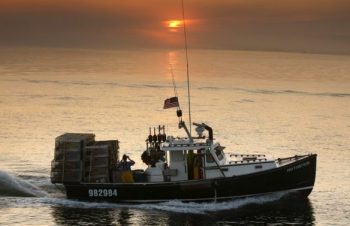
How an invasive species or pig hide could solve Maine’s lobster bait crisis
Gulf of Maine lobstermen are casting around far and wide for new kinds of bait now that federal regulators have cut herring quotas by 70 percent. Possible solutions range from the mass importation of a nuisance fish from the Midwest, to manufactured baits, to pig hides. Fisheries managers estimate a 50-million pound “herring gap” in Maine over the next year. To help close it, they are turning to colleagues in Illinois. >click to read<09:33
From Carp to Pig-Hide: Bait Shortage Means Change for Lobsters’ Diet – (a lot more information in this article) >click to read<
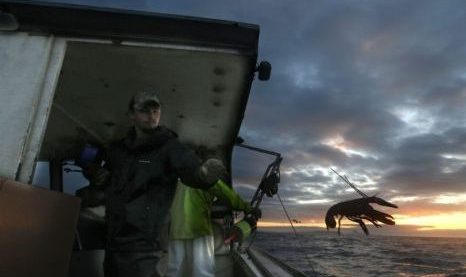
Maine Lobstermen Face 50 percent Trap-Rope Reduction To Protect Right Whales
Representatives from 14 Atlantic coast states participated in the four-day consensus-building project, including fishermen scientists, state regulators and conservation groups. The stakes were highest for Maine’s lobster industry, which landed $484 million worth of the crustaceans last year – the most valuable single-species fishery in the nation. The Cape Cod Times reports that Massachusetts and New Hampshire agreed to a 30% cut in the number of vertical lines, and to use ropes that break at a reduced weight. “The regulations proposed here today are a big ask,” says Patrick Keliher, the commissioner of Maine’s Department of Marine Resources. >click to read<13:06
NOAA – Team Reaches Nearly Unanimous Consensus on Right Whale Survival Measures ->click to read<15:50
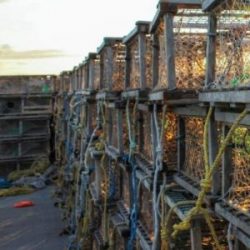
UNACCEPTABLE – Strict right whale protection goal raises concerns among lobstermen
Patrick Keliher, head of the Maine Department of Marine Resources, announced the proposed target at a conference of U.S. and Canadian lobstermen in Portland Friday while defending a decision to cancel three meetings with Maine fishermen to talk about looming right whale protections.,,, The National Marine Fisheries Service estimates that fishing rope entanglement kills or seriously injures five to nine right whales a year,… A few minutes later, Keliher got an email from the fisheries service that spelled out its risk reduction target. Frustrated, he stood up and delivered apparent bad news – he told an already exasperated audience that the service now wanted a 60 percent to 80 percent reduction in the size of the lobster fishery. The room erupted with anger. >click to read<22:49

MDI native to lead Maine Marine Patrol
Lieutenant Jay Carroll of Southwest Harbor, a 23-year veteran of the Maine Marine Patrol, has been promoted to Colonel, chief of the state’s marine law enforcement branch. He will begin work in his new role April 1, replacing Jon Cornish who officially retires April 5 after 34 years of service. “I am honored to take this next step in my career and look forward to working with the talented, hard-working Marine Patrol professionals whose efforts are critical in sustaining our state’s valuable marine resources,” Carroll said in a statement. >click to read<09:51






